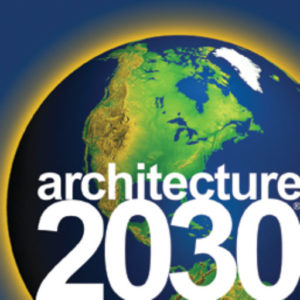Exploring Architecture 2030’s COP28 Priority Themes
November 2023 | Special Report
At COP28, Architecture 2030’s efforts will promote areas of untapped potential to reduce emissions in the way we design the built world:
BEYOND BUILDINGS: DECARBONIZATION’S NEXT FRONTIER Infrastructure, landscape and urban planning offer untapped potential to reduce emissions and lean into nature.
INDIGENOUS KNOWLEDGE: SCALING UP LOW-CARBON TRADITIONS Heritage and indigenous building forms and materials provide carbon and equity benefits at scale.
EXISTING BUILDINGS: REUSE AS CLIMATE ACTION The greenest building is the one that is already built.
CONSTRUCTION MATERIALS: ATTACKING EMBODIED CARBON Lower carbon, nature-based, and alternative building materials, right-sizing, and material efficiency radically decrease up-front embodied carbon.
Take a deeper dive into this year’s themes with the following recently published articles and videos:

With Building Emissions Dropping Significantly This Year, It’s Time to “Future-Proof” Our Infrastructure
By Edward Mazria, FAIA featured in Architectural Record
According to U.S. Energy Information Administration (EIA) statistics, U.S. building sector operating emissions fell in the first half of 2023 by about 8.4 percent percent, or 78.8 million metric tons CO2, compared to the same time last year. This fact is astonishing considering we added roughly 4 billion square feet to our building stock during that period according to the EIA. By contrast, we have been reducing emissions by an average of only 1.9 percent annually since 2005…

Climate Solutions From the Global South: Why the Future of Architecture Is Regional
By Carl Elefante, featured in Architizer
A year after the UN climate summit relaunch in Glasgow, many participants departed COP27 in Sharm el Sheikh searching for a silver lining. For some, the bright spot was action taken toward climate justice. Although the 2015 Paris Agreement acknowledged that circumstances in developed and developing nations differ, by establishing the Loss and Damage Fund, COP27 reconfigured the international climate action framework. The nations primarily responsible for carbon pollution are not the most vulnerable to its life-and-death consequences. Global peace and justice demand that polluting nations (largely in the “Global North”) clean up their mess and help protect others (largely in the “Global South”) from the havoc they are causing…

Carbon Positive: Putting Decarbonization Back on the Global Stage
By Lisa Richmond, featured in Architect
In light of significant progress in reducing energy that buildings use, Lisa Richmond writes, it’s time to broaden our scope and think more holistically about decreasing carbon emissions…

Climate Positive Design of the Exterior Built Environment
Following a nearly 20-year history of reshaping the conversation regarding the built environment’s contribution to climate change, Architecture 2030 is releasing new aggregations of International Energy Agency (IEA) data indicating that the global exterior built environment’s infrastructure and sitework impact has been underrepresented…

Lessons from Global South: Community Engagement for Decolonization and Decarbonization of the Built Environment
By Dr. Yasmeen Lai
Architect and activist Yasmeen Lari joined the Association for Preservation Technology International (APT) conference in Seattle, traveling from Pakistan to deliver “Lessons from Global South: Community Engagement for Decolonization and Decarbonization of the Built Environment” to conference attendees. We thank the APT College of Fellows for arranging this unique opportunity and for many Fellows who donated funds to make her presentation possible. Architecture 2030 proudly sponsored the event to make this recording available to the public…
ABOUT US
Architecture 2030’s mission is to rapidly transform the built environment from the major contributor of greenhouse gas emissions to a central solution to the climate crisis.




